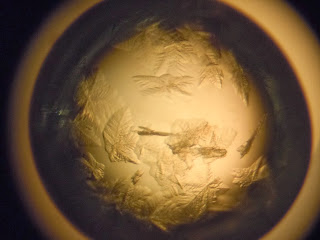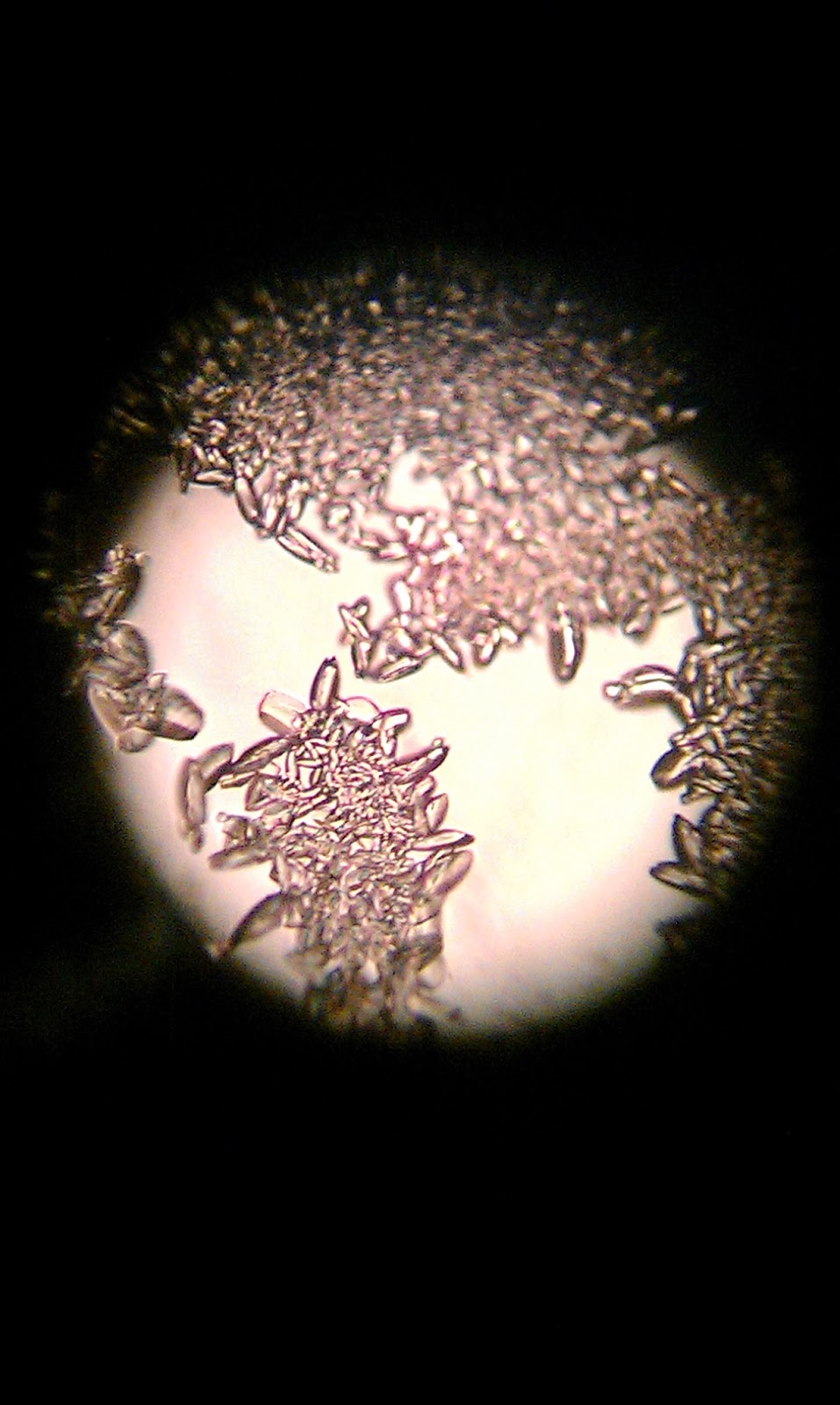Blog 14: Independent Component 1
Literal:
I, Christine Navarro, affirm that I completed my independent component which represents 30 hours of work.
My mentor, Micheal Susoeff, pretty much told me the basics of it and also answered all the questions I had about the project.
I didn't actually reach my goal in creating the perfect 3D crystal of our enzyme, instead I created other crystal like micro-crystals, 2D crystals, and a few others. But now I do know the importance of crystallization and what it is. I also learned that you have to look at the variables that might cause a reaction for example some chemicals might change the shape of the crystal and other chemicals may change the size of it.
Interpretive:
My component takes 30 hours of work because the wells that contain buffers and enzyme need time to precipitate in order to form some type of crystal. Then after it forms a reaction we look at it under a microscope and determine if they formed anything we can use and if it did form a crystal we have to look at what's inside the well and see what caused the crystal. We then make wells with different dilutions of the specific chemical and we wait for them to precipitate again so we can see if i worked or didn't. Then we do that over and over until we get the desired crystal.



I, Christine Navarro, affirm that I completed my independent component which represents 30 hours of work.
My mentor, Micheal Susoeff, pretty much told me the basics of it and also answered all the questions I had about the project.
I didn't actually reach my goal in creating the perfect 3D crystal of our enzyme, instead I created other crystal like micro-crystals, 2D crystals, and a few others. But now I do know the importance of crystallization and what it is. I also learned that you have to look at the variables that might cause a reaction for example some chemicals might change the shape of the crystal and other chemicals may change the size of it.
Interpretive:
My component takes 30 hours of work because the wells that contain buffers and enzyme need time to precipitate in order to form some type of crystal. Then after it forms a reaction we look at it under a microscope and determine if they formed anything we can use and if it did form a crystal we have to look at what's inside the well and see what caused the crystal. We then make wells with different dilutions of the specific chemical and we wait for them to precipitate again so we can see if i worked or didn't. Then we do that over and over until we get the desired crystal.
These are pictures of some of the crystals.
Applied:
Crystallization is very important to my topic. Crystallization provides us with the 3D crystal structure of the enzyme they then send it off to another lab the specializes in crystallography and the shoot lasers through the crystal and use math to find out the positions were the lasers diffract off the crystal and they input it into a computer the computer than makes a 3D structure of the enzyme. And we need this 3D structure to see how the enzyme functions, to see if we want to make mutations on the enzyme, and it also helps to see where we need to make the mutations. For example if we look at ADPGlucose pyrophosphorylase (our enzyme) and we look at how it reacts with the substrates, if we notice that the substrates are having a difficult time going into the activation site we then look to see why that is, how we do that is by looking at the 3D structure of the enzyme. After doing that we can change the structure thereby making the substrates combine more efficiently.

Comments
Post a Comment